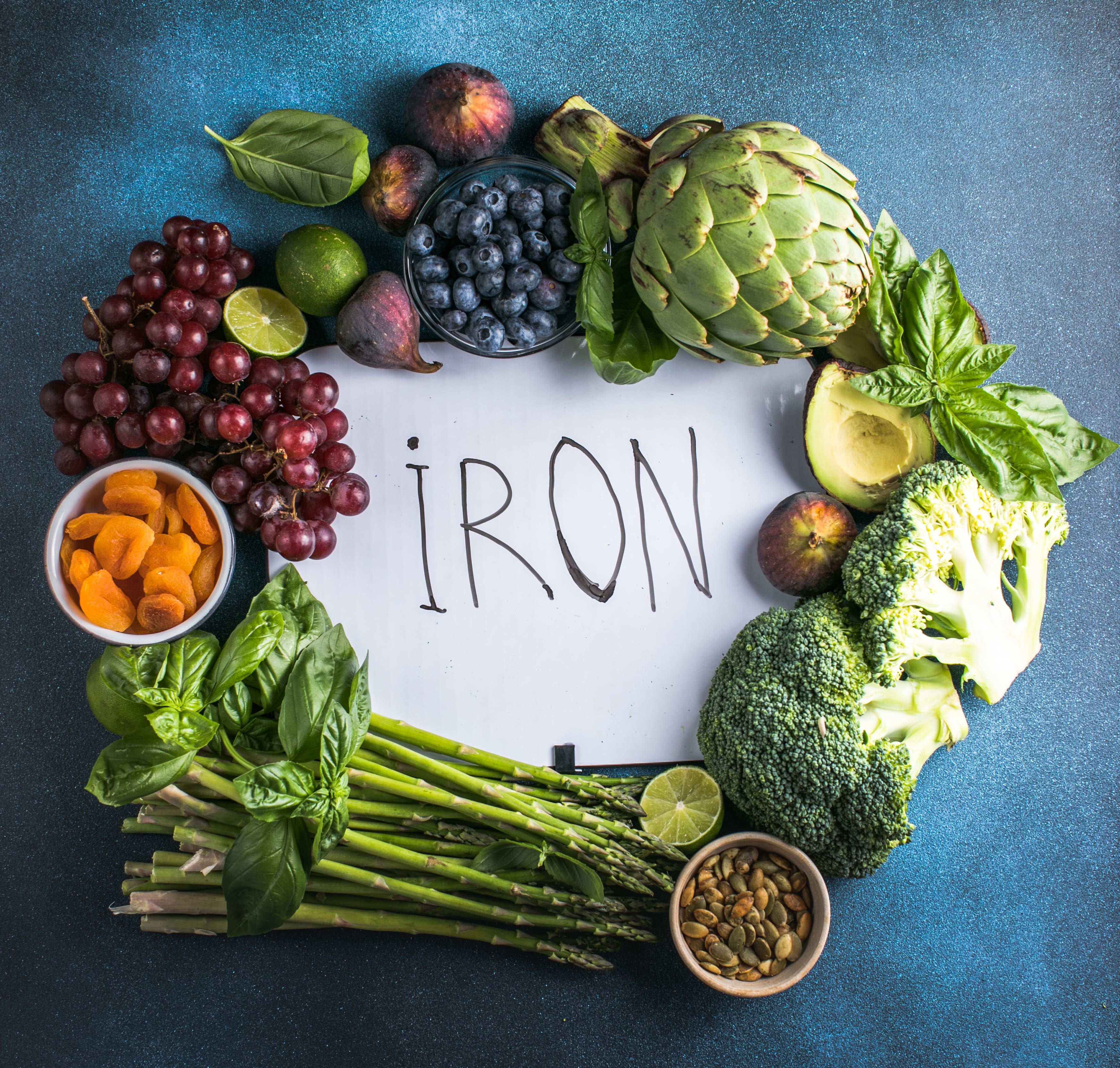Why Do Women Feel So Tired All the Time?
- Talia Dali
- Menstrual Health, Pregnancy & Post partum, Food & Hormones
Fatigue is incredibly common — but for women, it often goes beyond just being busy. There are four key physiological reasons why women are particularly vulnerable to chronic tiredness:
Iron Deficiency
Sleep Disruptions
Poor Food Intake (Timing and Quality)
Thyroid Dysfunction
Today, let’s zoom in on one of the most common, yet often overlooked, causes of fatigue: iron deficiency.
Why Are Women More Prone to Iron Deficiency?
It’s not just bad luck. Female physiology naturally increases the risk.
Menstrual Blood Loss
Each menstrual cycle, women lose real blood — not just endometrial tissue.
On average, women lose 30–40 mL of blood per cycle, which translates to a loss of 15–20 mg of iron each month.
Women with heavy periods (menorrhagia) can lose up to 80 mL or more, dramatically depleting their iron stores.
Low Iron and Heavy Periods: A Vicious Cycle
Low iron levels can actually make periods heavier, setting up a difficult cycle:
Iron is crucial for blood clotting. When iron is low, platelets work less efficiently, leading to heavier bleeding.
The uterus needs iron to contract properly. Without enough iron, the uterus may not tighten effectively, causing longer and heavier periods.
More bleeding leads to more iron loss, which worsens the deficiency.
Low iron → heavier periods → more blood loss → even lower iron — a cycle many women don’t realize they’re trapped in.

Pregnancy, Childbirth, and Lower Iron Reserves
Pregnancy triples iron requirements to build the placenta, increase blood volume, and nourish the baby.
Blood loss at delivery further depletes iron stores.
Even outside of pregnancy, women naturally have lower ferritin levels than men — often below 30–40 ng/mL, compared to men’s average of 100 ng/mL or more.
Diet and Absorption Challenges
Many women unknowingly make iron deficiency worse through diet and absorption issues.
Reduced intake of heme iron (found in red meat, poultry, fish) lowers available iron.
Plant-based diets provide non-heme iron, which is absorbed at a much lower rate (2–10%) compared to heme iron (15–35%).
Inhibitors like phytates, tannins, and calcium in foods and beverages can block iron absorption.
Gastrointestinal issues like celiac disease, inflammatory bowel disease, Helicobacter pylori infection, or low stomach acid also impair iron uptake.
Chronic inflammation (from conditions like obesity or autoimmune disease) raises hepcidin, a hormone that further blocks iron absorption and traps iron in storage.
Together, these factors mean that even a seemingly healthy diet might not provide enough absorbable iron — especially in women with higher needs or ongoing losses.

Ferritin, Iron, and Anemia: Understanding the Difference
Ferritin: Your iron storage tank. Low ferritin is an early sign of depletion.
Serum Iron: The amount of iron circulating in your blood (can fluctuate daily).
Iron-Deficiency Anemia: When low ferritin is combined with low hemoglobin, reducing oxygen delivery to tissues.
Many women suffer from low ferritin long before true anemia appears — and still experience major symptoms like fatigue, brain fog, and weakness.
Supplementing Iron: The Good, the Bad, and the Real Story
Over the years, I’ve seen many patients struggle with iron deficiency despite doing everything right.
Some even had multiple iron infusions each year — yet still felt exhausted, with low iron levels persisting.
Who hasn’t been prescribed oral iron, only to stop after a few weeks because of side effects?
Nausea, constipation, bloating, stomach cramps, and dark stools are common — and often enough to make people abandon treatment long before iron stores recover.
Fortunately, newer approaches offer hope:
Research shows that alternate-day dosing improves absorption and reduces side effects.
Using gentler formulations like ferrous bisglycinate or sucrosomial iron is much better tolerated, especially for sensitive digestion or chronic inflammation.
When oral iron isn’t tolerated, infusions can be lifesaving.
But infusions are often just a temporary patch. If the underlying problem — like heavy bleeding, poor absorption, or persistent inflammation — isn’t corrected, iron levels often fall again within months.
I’ve seen countless patients have three, four, even five infusions a year — yet never escape the cycle.
That’s why today, I focus not just on replacing iron, but on investigating and treating the root cause.
A New Perspective: It’s Not Just About Iron
Emerging evidence shows that supporting iron metabolism is just as important as restoring iron levels:
Vitamin A: Helps mobilize stored iron so it can be used for red blood cell production.
Chromium: May assist iron transport via transferrin (early evidence).
Copper, Vitamin B12, and Folate: Essential cofactors for healthy blood formation.
In my practice, combining iron therapy with vitamin A, chromium, copper, B12, and folate support has led to faster, more sustainable improvements — especially for women battling stubborn fatigue and low iron.

Final Thoughts
Chronic exhaustion is not “normal” — and it’s not just from being busy.
If you’re a woman facing persistent tiredness, iron deficiency deserves serious attention.
Addressing it properly — by replacing iron, improving absorption, and treating root causes — can dramatically transform your energy and quality of life.
Sometimes the solution isn’t just filling the tank with more iron — it’s fixing the pipes that deliver it.
References
Verdon F, Burnand B, Stubi CL, et al. Iron supplementation for unexplained fatigue in non-anaemic women: double blind randomised placebo controlled trial. BMJ. 2003;326(7399):1124. doi:10.1136/bmj.326.7399.1124
Semba RD, Bloem MW. The anemia of vitamin A deficiency: epidemiology and pathogenesis. Eur J Clin Nutr. 2002;56(4):271-281. doi:10.1038/sj.ejcn.1601320
Stoffel NU, Zeder C, Brittenham GM, et al. Iron absorption from oral iron supplements given on consecutive versus alternate days and as single morning doses: a prospective study. Lancet Haematol. 2017;4(11):e524-e533. doi:10.1016/S2352-3026(17)30182-5
Auerbach M, Macdougall IC. Safety of intravenous iron formulations: facts and folklore. Blood Transfus. 2014;12(3):296-300. doi:10.2450/2014.0051-14
Zimmermann MB, Hurrell RF. Nutritional iron deficiency. Lancet. 2007;370(9586):511-520. doi:10.1016/S0140-6736(07)61235-5
McCarty MF. Chromium and other insulin sensitizers may enhance iron transport by modulating transferrin expression. Med Hypotheses. 1996;47(4):331-336. doi:10.1016/S0306-9877(96)90200-3
Harris ED. Copper homeostasis: the role of cellular transporters. Nutr Rev. 2001;59(9):281-285. doi:10.1111/j.1753-4887.2001.tb07017.x